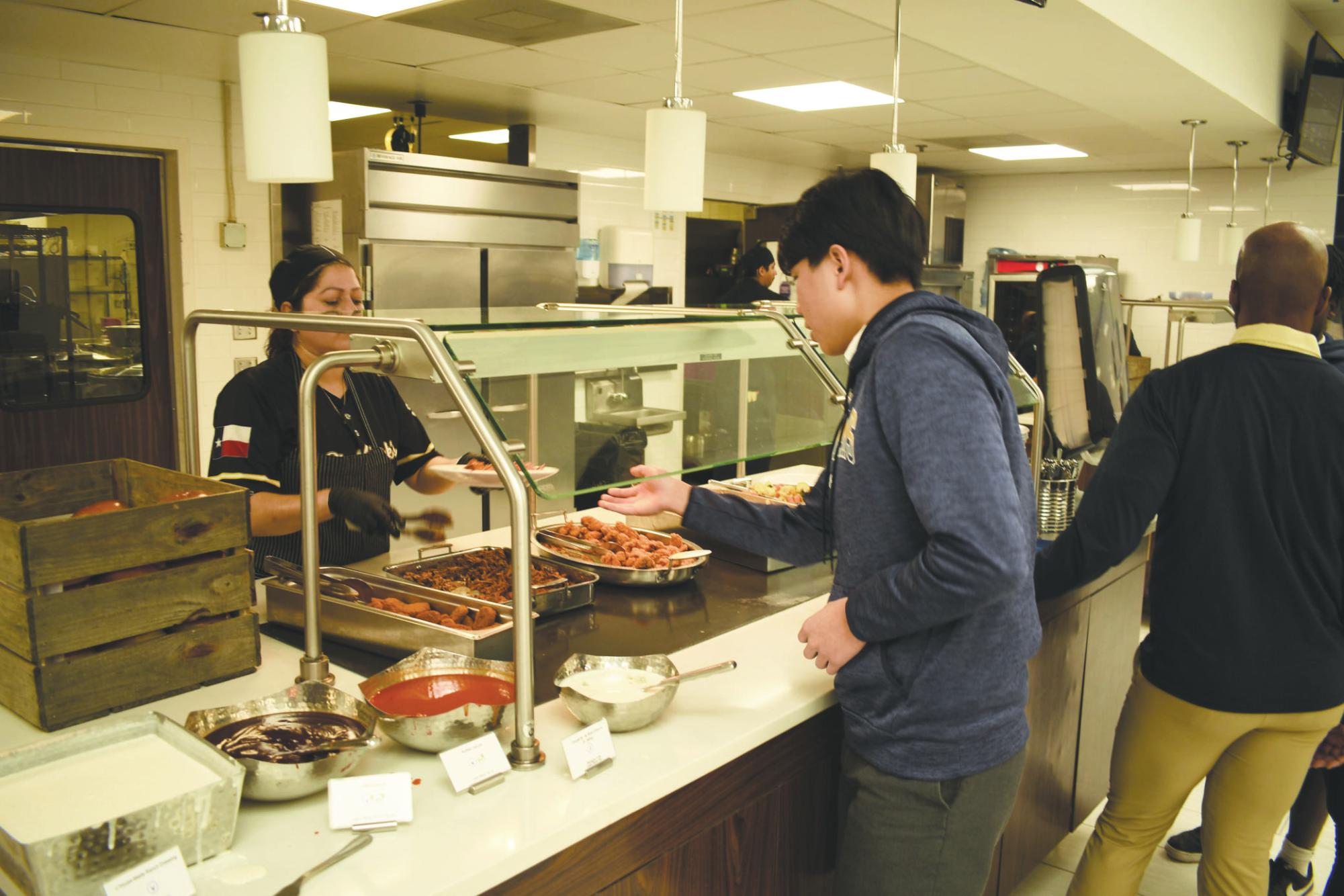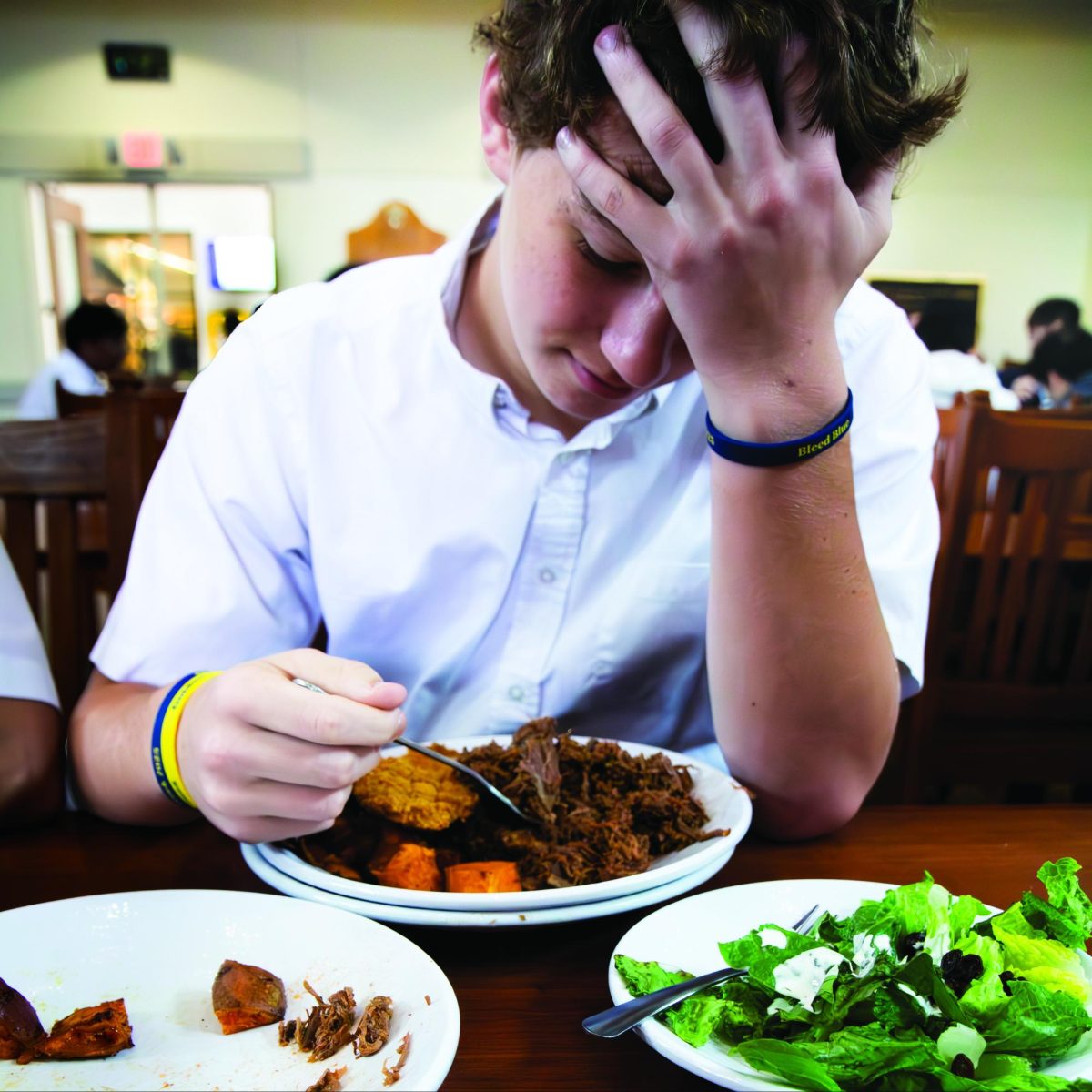In a world where the typical workload of a teenage student requires extreme focus for eight grueling hours, tending to additional rigorous athletic commitments and participating in a wide variety of extracurriculars, the importance of a reliable, healthy food source has become important for kids’ physical and mental health.
However, considering that high school curriculums have become extremely demanding recently, this issue has become more and more prevalent than ever.
According to a study conducted by BBC, students, as of this year, are lacking in their daily dietary regimens and completely skipping meals to keep up with their educational requirements. As a result, they are showing elevated levels in burnout and school-related stress.
At such a diverse school with boys taking part in so many different activities, the problem arises on campus as well.
“I do skip lunch here and there,” said Sophomore Kian Foshee. “My day is super busy. I wake up really early and have to quickly drive over to school because I live so far away. I also have sports and clubs to go to, so for things like homework and studying for tests, I don’t always have time to do them, and I’m forced to complete those things during my lunchtime.”
For Foshee, the problem supersedes a student’s neglect in eating and brings into question how lunch providers can appropriately address every students’ specific need. As a vegetarian, Foshee and others with dietary restrictions struggle to reach their specific caloric and nutrient goals considering the incredibly limited options that are suitable for them. And even if the options that day do satisfy their goals, students claim it doesn’t have the best flavor.
The primary food provider of the school, SAGE Dining Services, has attempted to combat this issue by serving a diverse assortment of different palettes and eating options to compensate for people who face such restrictions.
“As far as allergies are concerned,” said SAGE employee Lola Miller, ”We make sure that as students come into the servery, all of the screen and the line signs and the tablets all list the allergens that are in each dish. This makes it very easy for a student to come into the servery, look at the dish, look at all of the tagged allergens and make sure all of the items are safe for them.”
While SAGE does provide transparency for allergen and ingredient information, athletes, on the other hand, require a full scope of what they put into their bodies to fully assess what options they should consider. For varsity wrestler Sophomore William Taylor, the exact macronutrients of each meal is crucial to meet weigh-in requirements and compete in tournaments.
“The day or two before a tournament, I usually take down my sodium,” Taylor said. “So if it’s Asian food on a Wednesday, then I won’t eat and just drink some tea or something. The day before, I just won’t eat anything to stay under weight. It would definitely be a lot easier if I knew the serving size and portions though.”
Although most student-athletes with eating restrictions and specific goals understand the content of what they are eating, for the average Marksmen, the only true objective on their mind when entering the lunchroom is to simply find good food, regardless of the actual ‘healthiness’ of it. For this specific reason, SAGE aims to offer the healthiest options for all students.
“The way the SAGE program works is we have a protocol of what we need to follow as far as making sure we have two protein and one vegetarian option every day,” Miller said. “And so when we build our menus, we build them with those criteria in mind and send it to our dietitian who reviews and sends the menu back to let us know if there’s something that isn’t quite meeting those health standards.”








